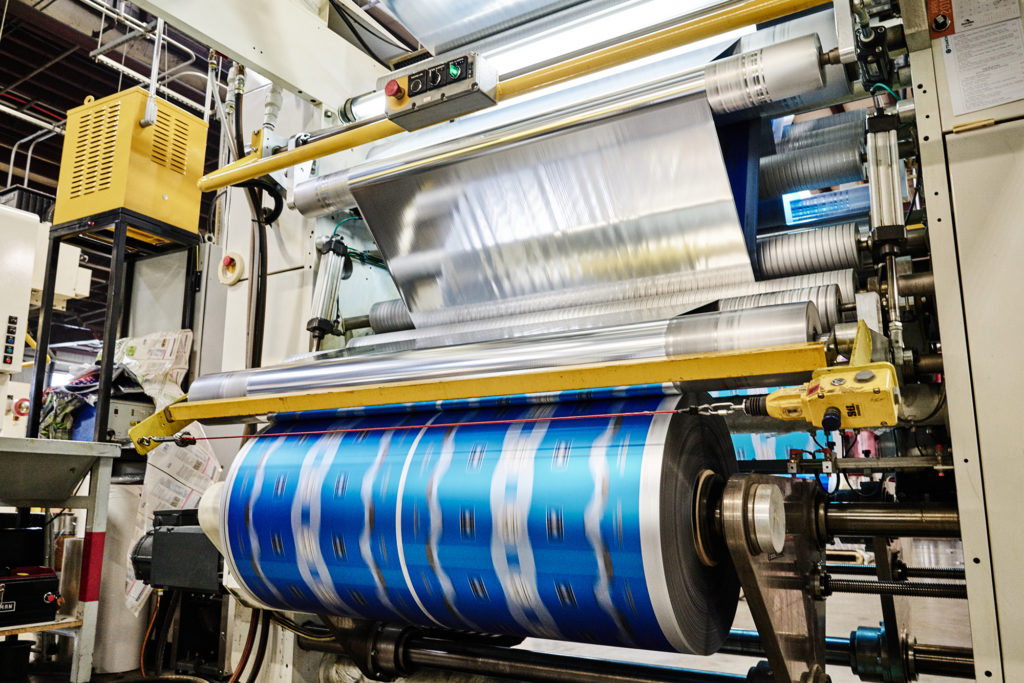The brands’ eye view
Unilever’s Matthew Daniels is a lifelong flexo fan and follower. Here he shares how judging Miraclon’s Global Flexo Innovation Awards will keep him at the cutting-edge of packaging print…
 The Global Flexo Innovation Awards are a great way to raise the bar for flexo. They will also help raise its profile, but for me personally it’s a golden opportunity to bring the outside world into Unilever. We want to learn and apply from the industry’s best. By being a judge at the awards, I can get closer to the driving forces behind flexo. I can see all the details and really understand the latest innovations making flexo stand out from the crowd.
The Global Flexo Innovation Awards are a great way to raise the bar for flexo. They will also help raise its profile, but for me personally it’s a golden opportunity to bring the outside world into Unilever. We want to learn and apply from the industry’s best. By being a judge at the awards, I can get closer to the driving forces behind flexo. I can see all the details and really understand the latest innovations making flexo stand out from the crowd.
I’ve been at Unilever 17 years, and, in that time, innovation has always played a major part in my work. Of course, we judge everything with our eyes, but what really grabs my attention is learning what sits behind what we see – whether that’s the materials, the press, the ink, in fact any facet of the printing process.
That’s what I’ll be looking for from these entrants. I want to know what the challenge was. Whether the job used a new lightweight material or color selection or met an ambitious lead time. I want to understand the dynamics of it all.
The brand perspective
I’ll also be looking at the different entrants through different lenses (quality, speed, cost, consumer, sustainability, etc.). I’ll be consciously comparing the submissions to what I know and what we see on the shelf.
I started my packaging career as I was finishing my diploma studies with Bowater Containers, a flexo corrugated company in South Wales. Back then flexo was always seen as the poor relation when compared with gravure and offset, but we used innovation to compete and grow. And even back then, it was striking how quickly high-quality printing plates could be manufactured in flexo, compared to gravure.
“Speed is the new currency today…we need to move fast; compressed lead-times and effective workflows are big attractions.”
My Unilever colleagues and I talk a lot about speed to market. Speed is the new currency today. When marketing makes changes to a design, or want to run a promotion, or new regulations spark changes to the ingredients being listed, you need to move fast; compressed lead-times and effective workflows are big attractions. The speed with which printers can work – from receiving the new design to assembling the pack and decorating – is key.

Industry pressure in 2020
This year, we’ve learnt to operate in new ways in response to the Covid-19 pandemic. While we’ve not been able to have the normal face-to-face meetings between designers, marketers and printers, we have adapted by hosting these remotely via video call to ensure business continuity, but has print quality suffered a little during Covid-19?
I would like to see how printers are managing to maintain high quality print for their clients when their clients are not physically present on press for new product development.
“Not all printers will share their waste figures… I’d like to see more transparency in this area.”
I wonder whether waste levels will increase or decrease as a result too? How about speed?
I would like to the data behind these drivers.
What’s the future of flexo?
I see speed and cost as key benefits of using flexo, but also sustainability. Not all printers share their waste figures, but I’d like to see more transparency in this area and ways to reduce to 0%. How long did it take to set up the job? How long does it take to reset and clean the print stations? Are they using a common color palette for all clients to leverage best price, or is the machine set specific to a client each time?
Before Covid-19 came along, the whole world was thinking about sustainability, about pollution and resources being used. And for this reason, I’d say the biggest threat to flexo right now lies with digital.
Digital is on demand: it’s able to print on many different materials and simplify the number of inks and colors used, and maintain original design intent. Crucially you’re only printing what you need without printing plates or cylinders. So digital has a major role to play when talking about sustainability. Flexo now needs to demonstrate how it too is able to tick all the boxes in terms of energy used, carbon footprint, and waste.
“Print technologies that shift the paradigm are of real interest and value that can make a difference.”
For the 13 years I worked in my first packaging job in South Wales, everything was about flexo for me. And it has remained a massive passion of mine ever since. I’d say it’s even shaped me as a person, in terms of the value proposition it has to offer. I believe flexo is sitting pretty these days. It really does offer the wow factor.
Print technologies that shift the paradigm are of real interest and add value that makes a difference. Flexo is playing its part with trends like diagnostic devices, lenticular printing and printed electronics. These are some of the new green shoots that are sure to benefit flexo.
Matthew Daniels is Artwork Innovation Manager for Unilever’s Global Marketing Services, and a member of the independent judging panel for the Global Flexo Innovation Awards 2020.